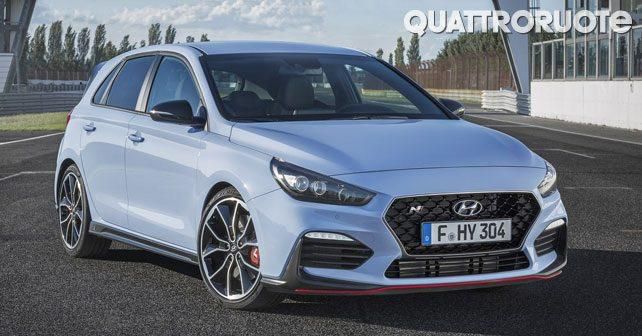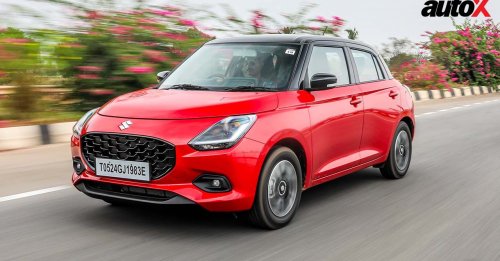
With 271 horses on tap, the Hyundai i30 N marks a new beginning for the Korean auto major. We drive an early prototype of the car to see if Hyundai’s ‘N’ performance division has been up to any good over all these years…
The Eifel mountains, near the legendary Nurburgring Nordschleife, is exactly where we’re driving this special prototype, the Hyundai i30 N – the hard-core performance version of this everyday Korean hatchback, a first of its kind for the company. The nose and tail of this prototype are still camouflaged, but the final production version has since been released. On the inside, you get well-contoured sport seats and ergonomically sorted controls. At the heart of the matter is a 2.0-litre turbo motor. I’m driving this prototype sitting next to Alexander Eicher, the chief engineer of high performance testing at Hyundai’s European R&D centre at the Nurburgring. Nobody knows this car better than him.
From WRC with love…
How did a mass-market car brand like Hyundai come to the idea of starting a whole new performance division with a dedicated logo? At first, it seemed like a bizarre idea since performance has never been a part of the brand’s DNA. Moreover, we’re talking about a car here that will have established rivals in Europe, such as the Peugeot 308 GTi, Renault Mégane RS and the Seat Leon Cupra.
To understand more about this, you need to go back in time. In December 2013, Hyundai announced the arrival of its ‘N’ performance division alongside the WRC-prepped i20. That was also precisely the time when Hyundai entered motorsport. Competing in the WRC also meant that Hyundai would develop performance derivatives of the firm’s standard cars based on the learnings from the programme. All in all, the N division is meant for design and development of go-faster Hyundais without compromising on convenience and reliability. The Korean brand’s main aim is to make the driver feel more special and more connected with the cars from its new high-performance N division.
It was about opening a new chapter, and expanding the facets of the brand. Meanwhile, the camouflaged prototypes have already clocked thousands of miles on the road, as well as on the track in order to prove their performance, reliability and real-world credibility.
Horses for Courses
Back in the passenger compartment, the chief engineer makes it clear: “The i30 N must not be the most extreme car in its category, but it has to be the most balanced one. It always has to be manageable on both road and track.” Let’s see if that’s the case here. I’m at the wheel of the most powerful version of the hatchback, and it’s churning out 271bhp (in future there will be a 247bhp version as well). It comes with the ‘Performance Pack’ that includes 19-inch wheels (instead of 18), and gets top-shelf parts such as uprated brakes, a modified suspension, and an electronic self-locking differential (an E-LSD).
In ‘Normal’ mode, the 2.0-litre motor feels peppy and linear. Hit the button on the left and select ‘Sport’ mode, and everything becomes more responsive. When your right foot sinks into the carpet, forward progression is vigorous. Meanwhile, the shift lights suggest that you change gears at 6,700rpm. The suspension setup is noticeably stiffer, even though it’s not entirely uncomfortable (the shock absorbers have variable damping). But then, when you select the ‘N’ mode, the car becomes much, much stiffer and more aggressive on the track. The exhaust note also gets a bit throaty and catches your attention. You can feel almost all the road-undulations, and there’s good amount of torque-steer. Even when accelerating hard in second gear, you’re required to have a firm grip on the steering wheel. Power delivery from the motor is incredible. The drive, however, remains precise and manageable. Because the i30 N is low-slung, it’s poised around tight bends. It feels supremely balanced and incredibly agile. The self-locking differential doesn’t let off much power around slow curves. Also well calibrated are the electronics in this car. The system isn’t invasive, even when it’s partially turned on. What makes it even more engaging to drive is its six-speed manual gearbox, which comes with short gear ratios. That said, even if this model is not an outright track car, it’ll satiate the performance cravings of most people.
Operating Base
Hyundai’s European Test Centre, which works closely with its European headquarters in Rüsselsheim, is located near the Nordschleife. The facility has been developing and testing prototypes here ever since 2013. On an average, ten prototypes are tested at the facility per year. And they clock around 10,000 kilometres on the track, which is equivalent to testing a car for 150,000 kilometres on normal roads.
The Toughest Exam
In this picture, you see the still camouflaged prototype of the Hyundai i30 N trackside at the legendary Nurburgring Nordschleife. Hyundai tested the car extensively – both on track and on public roads – to find the perfect setting for its first ‘N’ division vehicle.
THE ORIGIN OF “N”
The letter “N” marks the first step to what should become a family of performance Hyundai cars in the future. It stands for Namyang, where the firm’s largest research and development centre is located, in South Korea. Subsequently, it also represents Nurburgring, which has been the test bed for the upcoming N cars.

We drove a prototype of the Hyundai i30 N, which is what you see on the left. On the right is the final car that’s since been officially unveiled. As expected, it looks subdued and non-pretentious — something that makes it even more appealing, we think.
The Details
From the disguised interiors emerge some delightful details. Above, from the right: the control that activates the N mode – the ‘baddest’ setting. Other driving modes include Normal, Sport and a custom N mode. The speedometer with 300km/h says it all. The tachometer is also marked with an ‘N.’
ALBERT BIERMANN
The Man behind the change
As it often happens, when a new chapter is opened, there’s one key person who kicks off the change. In Hyundai’s case, this key person is 59-year-old Albert Biermann (below). In 2014, Mr. Biermann left the management of BMW M GmbH to head the research and development of high-performance Hyundai cars. His mission is to study sports cars and improve the handling of all models in production. As a result, the stages that have led to the development of the i30 N have been planned very carefully. At the Frankfurt Auto Show in 2015, two high-performance prototypes were presented – the N 2025 Vision Gran Turismo and the RM15. Then, a year later, at the Paris Motor Show, the RN30 racing concept appeared. But, the real work of the N division only came to light when, in May 2017, two race-spec i30 N machines finished the famed Nurburgring 24-hour race in fourth and ninth places in the SP3T class. At the same time, the prototypes were in their final phase of testing in real world conditions.
© Riproduzione riservata
Also read: Land Rover Discovery 4 : First Impressions





























Write your Comment